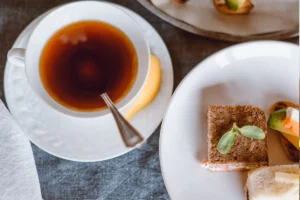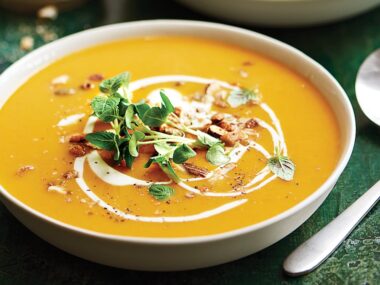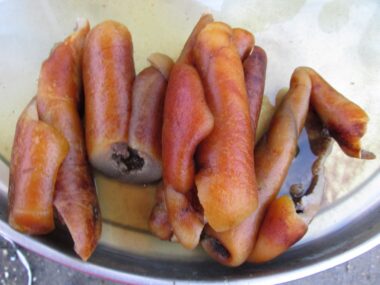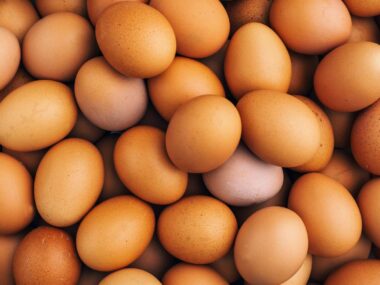Bread and tea have been staple companions in many cultures around the world, each bringing its own rich history, comforting qualities, and delightful flavors to the table. Whether enjoyed as a simple breakfast, an afternoon snack, or a cozy evening ritual, the combination of bread and tea offers a versatile and satisfying experience. This article explores the origins, variations, and cultural significance of this classic pairing, as well as the health benefits and creative ways to enjoy bread and tea together.

The Origins and Cultural Significance
Bread and tea both have ancient origins, deeply embedded in the culinary traditions of various civilizations.
Bread:
- Ancient Beginnings: The history of bread dates back to ancient Egypt, where the first leavened bread is believed to have been baked over 5,000 years ago. Bread quickly became a fundamental part of the diet in many cultures due to its simplicity and nourishment.
- Global Variations: From the French baguette and Italian ciabatta to Indian naan and Ethiopian injera, bread comes in numerous forms, each reflecting the unique ingredients and baking techniques of its region.
Tea:
- Ancient China: The history of tea begins in ancient China around 2737 BC, when Emperor Shen Nong accidentally discovered the refreshing qualities of tea leaves infused in boiling water. Tea soon spread across Asia and the world, becoming a cornerstone of social and cultural practices.
- Ceremonial Importance: In many cultures, tea is not just a beverage but a ritual. The Japanese tea ceremony, British afternoon tea, and Chinese gongfu tea are all elaborate practices that emphasize the importance of tea in daily life.
Health Benefits of Bread and Tea
Both bread and tea offer various health benefits, making their combination not only enjoyable but also beneficial to well-being.
Bread:
- Nutrient-Rich: Whole grain bread is packed with essential nutrients, including fiber, B vitamins, iron, and magnesium. These nutrients support digestion, energy production, and overall health.
- Energy Source: Carbohydrates in bread provide a quick and sustained source of energy, making it an ideal choice for breakfast or a midday snack.
Tea:
- Antioxidants: Tea, especially green and black varieties, is rich in antioxidants such as polyphenols and catechins, which help protect the body from oxidative stress and reduce the risk of chronic diseases.
- Hydration and Relaxation: Tea is a hydrating beverage that also contains compounds like L-theanine, which promotes relaxation and reduces stress without causing drowsiness.
Creative Pairings and Recipes
The versatility of bread and tea allows for endless combinations and creative culinary adventures. Here are some delightful ways to pair bread and tea:
1. Classic Buttered Toast with Black Tea:
- Simple and Satisfying: A slice of freshly baked whole grain or sourdough bread toasted to perfection and spread with a generous layer of butter is a timeless pairing with a robust cup of black tea.
- Flavor Enhancements: Add a drizzle of honey or a sprinkle of cinnamon to your toast for extra flavor that complements the boldness of black tea.
2. Avocado Toast with Green Tea:
- Nutrient-Packed: Spread ripe avocado on whole grain toast, sprinkle with sea salt, black pepper, and a squeeze of lemon juice. Pair with a refreshing cup of green tea.
- Health Boost: The healthy fats in avocado and the antioxidants in green tea create a nutrient-dense and delicious combination.
3. Berry Jam on Rye Bread with Herbal Tea:
- Sweet and Tangy: Slather homemade or store-bought berry jam on slices of rye bread for a sweet yet hearty snack.
- Soothing Beverage: Enjoy with a cup of herbal tea, such as chamomile or rooibos, to enhance the sweetness and provide a calming effect.
4. Hummus on Pita Bread with Mint Tea:
- Savory Delight: Spread creamy hummus on warm pita bread, topped with a sprinkle of paprika and a drizzle of olive oil.
- Refreshing Complement: Mint tea, whether served hot or iced, offers a refreshing contrast to the savory flavors of hummus and pita.
5. Cinnamon Raisin Bread with Chai Tea:
- Spiced Harmony: Toast slices of cinnamon raisin bread and enjoy with a cup of spiced chai tea.
- Flavor Fusion: The warming spices in both the bread and tea create a harmonious and comforting flavor experience.
Cultural Rituals and Social Connections
The pairing of bread and tea is often associated with social gatherings and cultural rituals that foster connection and community.
Afternoon Tea:
- British Tradition: Afternoon tea is a quintessentially British tradition involving a selection of finger sandwiches, scones with clotted cream and jam, and an assortment of pastries, all served with a pot of tea.
- Social Event: This ritual provides an opportunity for socializing and relaxation, often enjoyed in elegant settings or at home with friends and family.
Tea and Toast:
- Comforting Ritual: In many cultures, tea and toast are a comforting ritual, often enjoyed during quiet mornings or as a simple bedtime snack.
- Family Moments: Sharing tea and toast can be a way to bond with family members, creating cherished moments of togetherness and comfort.
Tea Ceremonies:
- Cultural Significance: Tea ceremonies in Japan, China, and other cultures highlight the importance of mindfulness, respect, and hospitality.
- Complementary Snacks: These ceremonies often include complementary snacks such as rice cakes, sweet buns, or light sandwiches that pair beautifully with different types of tea.
Conclusion
The combination of bread and tea transcends cultural boundaries and offers a versatile and comforting experience suitable for any time of day. From the simple pleasure of buttered toast and black tea to the more elaborate pairing of hummus on pita with mint tea, there are endless possibilities to explore and enjoy. Embracing the health benefits, cultural significance, and social connections fostered by bread and tea can enrich daily life, offering moments of nourishment, relaxation, and joy. Whether enjoyed alone or shared with loved ones, bread and tea continue to be a perfect pairing that delights the senses and warms the heart.










